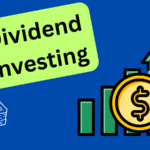Disclaimer: The following is for informational purposes only and not financial advice. Always do your own due diligence. I am not a licensed advisor.
Tesla’s Stock Split History: What It Means for Investors
In the world of investing, few companies capture as much attention as Tesla. Beyond its electric vehicles and Elon Musk’s bold ambitions, Tesla has become a phenomenon in the stock market. One of the most fascinating aspects of this journey is its approach to stock splits. Investors often ask: What is Tesla’s stock split history, and why does it matter?
Let’s walk through the story of Tesla’s stock splits, why they happened, and what they mean for everyday investors looking to ride the Tesla wave.
What is a Stock Split?
A stock split increases the number of a company’s shares while lowering the price of each share. The total value of the company remains the same, but the stock becomes more accessible to smaller investors.
Tesla’s management used this tool to make its shares more accessible, boost trading activity, and signal confidence in the company’s growth. But unlike a share buyback, which reduces the number of shares, a split multiplies them.
Tesla’s First Stock Split: August 2020
The first significant chapter in Tesla’s stock split history began on August 31, 2020.
Before the split, Tesla’s stock was trading at a hefty $2,250 per share. Many retail investors felt priced out. Then came the 5-for-1 split. Suddenly, each share cost about $450, and investors who held one share now owned five.
The move democratized Tesla’s ownership. For young investors and everyday traders, this felt like a golden ticket to be part of Tesla’s future. Within weeks, trading volume soared, and Tesla’s split dominated financial headlines.

Tesla’s Second Stock Split: August 2022
Two years later, on August 25, 2022, Tesla struck again. This time it was a 3-for-1 split.
Leading up to the split, shares hovered around $900. Afterward, the price was adjusted to about $300. Once again, Tesla proved it wanted to keep shares within reach of retail investors.
But the 2022 split wasn’t just about affordability. Analysts speculated that Tesla wanted to remain attractive for inclusion in key market indices and maintain strong trading activity.
Why Tesla Uses Stock Splits
From a capitalist perspective, stock splits serve multiple purposes:
- Accessibility: A $300 share feels more attainable than a $900 one.
- Liquidity: Lower prices encourage more buying and selling, keeping markets active.
- Psychology: Retail investors often perceive a “cheaper” stock as a better entry point.
- Index inclusion: Meeting requirements for indices like the S&P 500 can attract institutional money.
Tesla’s strategy mirrors moves by tech giants like Amazon, Google, and Microsoft, all of which used splits to widen their shareholder base.
Is Another Tesla Stock Split Coming?
Speculation about a new Tesla stock split never stops. Analysts suggest the company might act again if the price climbs into the $500–$800 range.
- Some predict a 2024 split, especially if share prices rise after market recovery.
- Others believe Tesla will wait until 2025–2026, maintaining its three-figure stock price sweet spot.
While no one can say for sure, Tesla’s history shows it prefers to avoid four-digit share prices.

Investor Excitement vs. Reality
It’s important to remember: stock splits don’t change Tesla’s value. If you owned $10,000 worth of Tesla before the split, you still had $10,000 afterward.
However, splits can fuel short-term rallies. For example, Tesla’s stock price rose quickly after the 2020 split announcement, partly due to hype. But long-term, fundamentals like earnings growth, vehicle sales, and innovation matter far more.
Tesla’s Future Outlook
Looking ahead, Tesla’s growth story continues. Projections suggest:
- Vehicle sales could reach 14–20 million annually by 2030.
- Full Self-Driving (FSD) subscriptions may add billions in recurring revenue.
- Earnings per share (EPS) could climb into the $40–$50 range by the end of the decade.
If those numbers hold, Tesla’s market value could soar into the trillions. But risks remain—competition in the EV market, global economic conditions, and execution challenges could impact results.
Key Lessons for Investors
For those studying Tesla’s stock split history, here are the main takeaways:
- Splits improve accessibility but don’t increase value.
- Investor psychology plays a big role—hype can temporarily boost prices.
- Long-term performance depends on fundamentals, not cosmetic changes.
- Timing a split for profit is risky—no guarantee prices will rise afterward.
- Focus on Tesla’s core growth areas: EV dominance, clean energy, and software revenue.

More Than Just a Numbers Game
Tesla’s stock split history reflects the company’s unique ability to combine financial strategy with investor excitement. The 2020 and 2022 splits made ownership more inclusive, drawing in millions of new shareholders.
But the real story is bigger than splits. Tesla’s future depends on innovation, execution, and maintaining its edge in a fiercely competitive market. For investors, the key is not just when Tesla splits its stock again—but whether the company delivers on its promises of growth and transformation.










